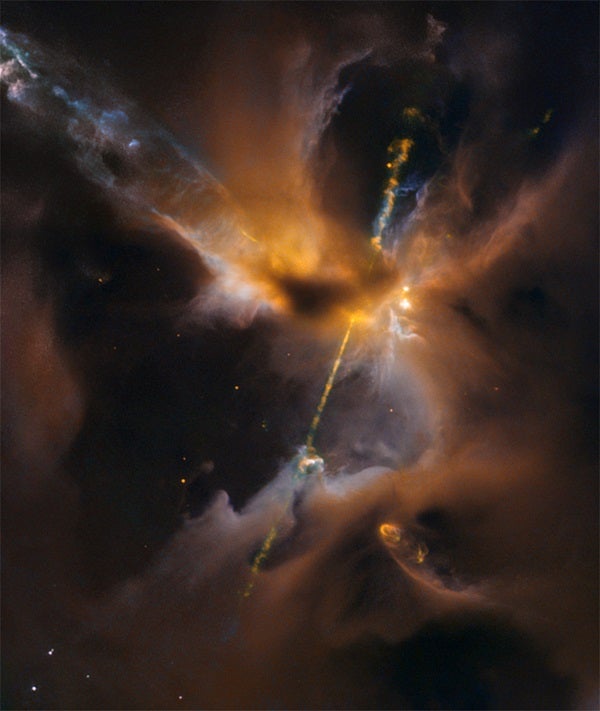Countless artists throughout time have tried to capture the beautiful essence of nature in their works. But Hubble does that by default.
Located in the Milky Way some 1,350 light-years from Earth lies this stunning object, Herbig-Haro Jet HH 24. This bright splotch in the Orion B molecular cloud complex is a hotspot for newborn stars — showcasing a powerful jet of ionized gas (ejected by a young star) colliding with surrounding gas and dust, which is a trait of Herbig-Haro objects.
Hubble captured this dramatic image in 2015, and it reveals a newborn star forming within a giant cloud of cool molecular hydrogen. Such cool hydrogen clouds also tend to collapse due to gravity, forming a thick disk of rotating material around the newborn star. And as the star gobbles up this superheated material, some of it manages to escape by shooting from the star’s poles, heating any nearby gas to thousands of degrees Fahrenheit.
Eventually, though, this region will settle down enough that planets will likely be born from the disk of material surrounding the young star.










